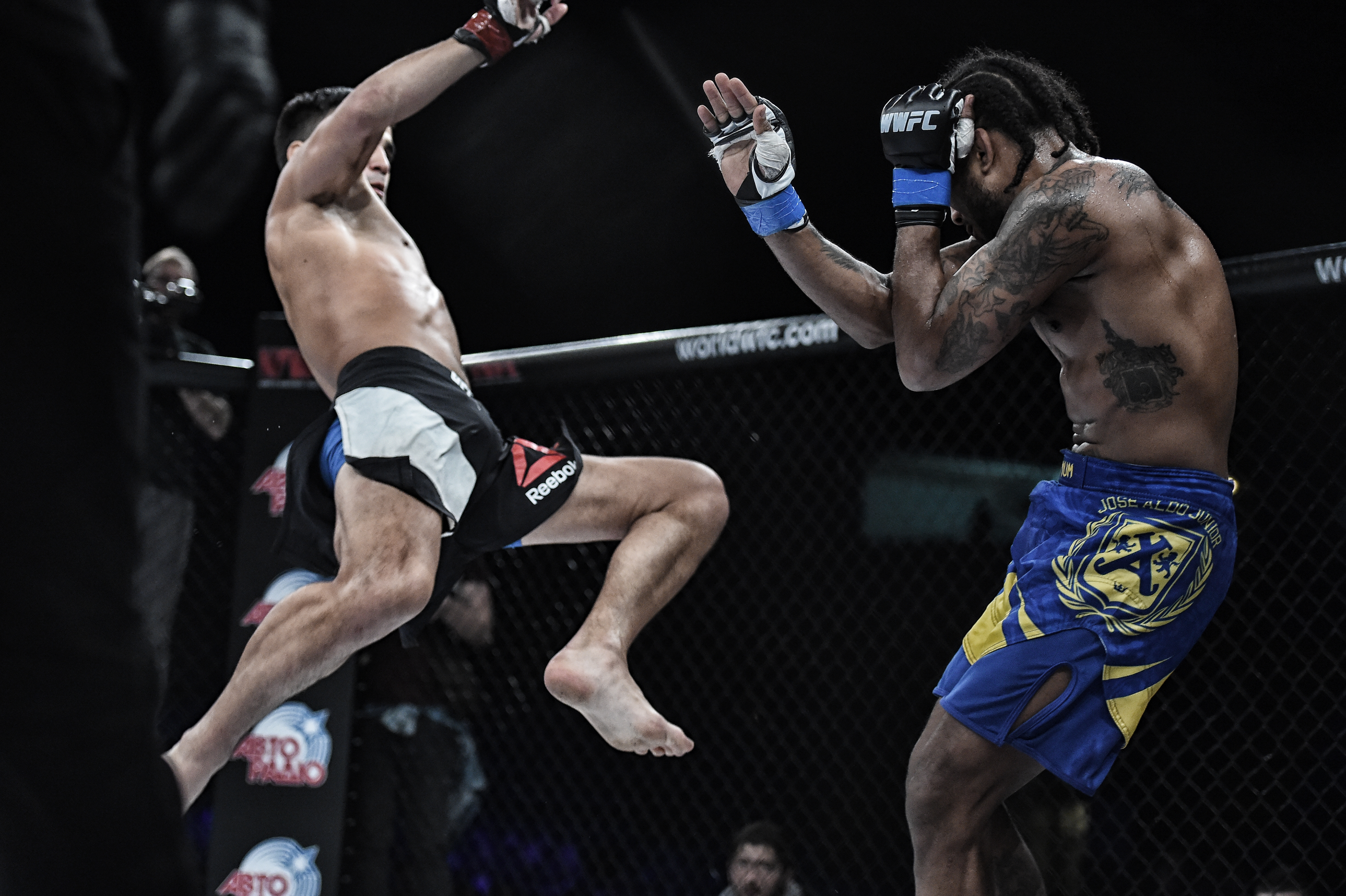The UFC has been at the forefront of innovation when it comes to the sport of Mixed Martial Arts, however they have been absent in a key area–weight cutting and the gap in weight classes. Currently, there is a 15-pound gap between Lightweight (155) and Welterweight (170), the two largest and arguably most talent rich divisions in the sport.
To compound this issue, there is also a 15-pound gap between Welterweight and Middleweight (185). Conventional wisdom is that the larger the human, the easier the weight cut (as a percentage of overall body weight), but the limited weight class options force the competitor to either drop a significant amount of weight or compete against a much larger fighter (who opted to cut that weight).
One Championship has been a pioneer in regards to safe weight cutting while still maintaining competitive fights. After a fighter tragically died while cutting weight, they instituted an entirely new weight cutting system that has resulted in fighters competing at more natural weight classes, as well as more transparency in the way in which they cut weight.
Fighters are forced to have regular weight checks as far as eight weeks out from the fight; as well as hydration tests prior to weigh-ins to ensure that their health is not compromised due to dehydration. The ongoing question for the UFC is, at what point do you take preventative measures (rather than having to react)?
The UFC can make very simple adjustments to produce a major impact on the sport. The first is moving the 170-pound weight class to 175 pounds and creating a new weight class at 165 pounds.
Mixed Martial Arts has an incredibly large talent pool in this weight range, so there will never be a shortage of talent to fill the roster (something we have seen at Light Heavyweight and Heavyweight). The next change is moving the 185-pound division to 190 pounds.
This will decrease the gap between Middleweight and Light Heavyweight, while still maintaining an efficient gap from Welterweight (175) to Middleweight (190) to prevent fighters from cutting additional weight to reach the new 175-pound weight class.
The larger gaps are important to maintain in the heavier weight classes due to both smaller talent pools as well as the fact that it is safer for larger athletes to cut more weight than smaller athletes. This allows for parity in the division without one of the smaller divisions cannibalizing all of the talent in the heavier ones. The only issue that will arise with the creation of this new weight class and adjustment is that some Middleweights will still try to cut weight to 175 pounds safely.
The most effective answer to this is through a weight certification process. In this process, under the supervision of trained professionals, the athlete can have all of their body composition measured while conducting a simulated weight cut. By monitoring the athlete closely throughout this process, the trained professionals can decide early-on in the weight cut how safe (if at all) the athlete can make the requisite class.
A common complaint in boxing is that there are too many weight classes and too many champions to keep track of. However, the businesses of the sports are fundamentally different, and the fear of diluting the UFC’s business with additional weight classes is blown out of proportion.
With the recommended adjustment, there will only be one additional champion, with the shift made to protect the fighters’ health and provide more avenues for success. Viewership will increase with the potential for more Champion vs. Champion fights, and the careers of the fan’s favorite athletes will be prolonged.
Some of Mixed Martial Art’s most popular athletes are all competing within a few weight classes of one another. Conor McGregor vs. George Saint Pierre, Khabib Nurmagomedov vs. Tyron Woodley, Nate Diaz vs Robbie Lawler, are all matchups where the fighters could meet “in the middle” of their current divisions and do so in a healthy manner.
There is no time better than now to take advantage of the abundance of big-name talent the UFC has on its roster and produce some of the most exciting (and hydrated) fights in its short history.
About the Author: Charles DiGisco has been competing, consulting and providing color commentary in Mixed Martial Arts for nearly a decade. He also owns the MMA gym District Martial Arts in Arlington, Virginia and is the host of the podcast, “The Lover and The Fighter”, available on iTunes, Instagram (@cgdigisco) and Spotify.

















